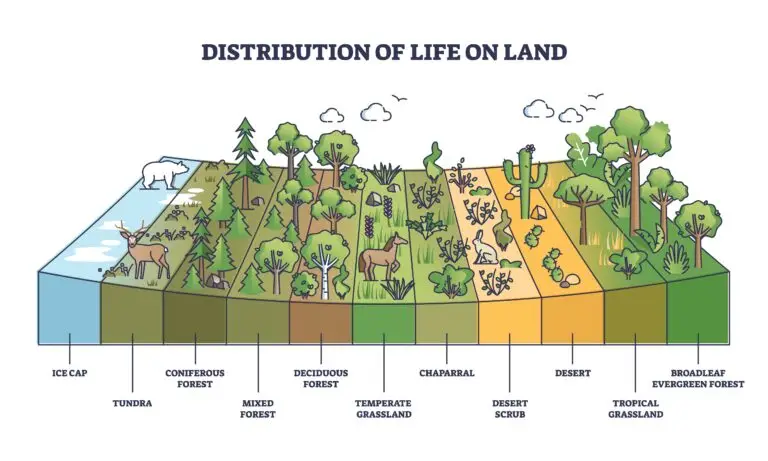Terrestrial

Table of Contents
Terrestrial Definition
The term “terrestrial” refers to organisms and ecosystems associated with or primarily inhabit land, as opposed to aquatic or marine environments.
Terrestrial ecosystems encompass various habitats, ranging from deserts and grasslands to forests and tundra. Organisms adapted to life on land and do not rely on aquatic environments are considered terrestrial.
Terrestrial Environments
Land-Based
Terrestrial environments are characterized by being located on or relating to the land. This includes soil, rock, and other substrates on Earth’s surface.
Variable Habitats
Terrestrial habitats vary widely and can include deserts, forests, grasslands, mountains, tundra, and more. Each habitat has its own set of environmental conditions, such as temperature, humidity, and vegetation types.
Adaptations to Dry Conditions
Many terrestrial organisms have adaptations to cope with drier conditions than aquatic environments. These adaptations may include specialized respiratory structures, water-conserving mechanisms, and the ability to withstand fluctuations in temperature.
Diverse Flora and Fauna
Terrestrial ecosystems support a diverse array of plant and animal life. This diversity is influenced by factors such as climate, soil type, and the availability of resources.
Interaction with Atmospheric Conditions
Terrestrial organisms interact with atmospheric conditions, including air composition, sunlight, and atmospheric gases. Plants, for example, use sunlight in photosynthesis to produce energy.
Terrestrial Biomes
Biomes are large-scale ecological regions characterized by specific climate and vegetation types. Examples of terrestrial biomes include tropical rainforests, deserts, temperate forests, and grasslands.
Examples of Terrestrial Organisms
- Plants: Trees, shrubs, grasses, and other vegetation types are common in terrestrial environments. They play a crucial role in providing habitat, food, and oxygen.
- Animals: Terrestrial animals include mammals, birds, reptiles, insects, etc. These organisms have evolved various adaptations to life on land, such as limbs for walking or running.
- Fungi: Certain fungi are associated with terrestrial environments, playing roles in nutrient cycling and decomposition.
- Microorganisms: Soil is a vital component of terrestrial ecosystems and is inhabited by a diverse community of microorganisms, including bacteria and fungi.
Related Links
Botany
Community
Food Chain
Predator